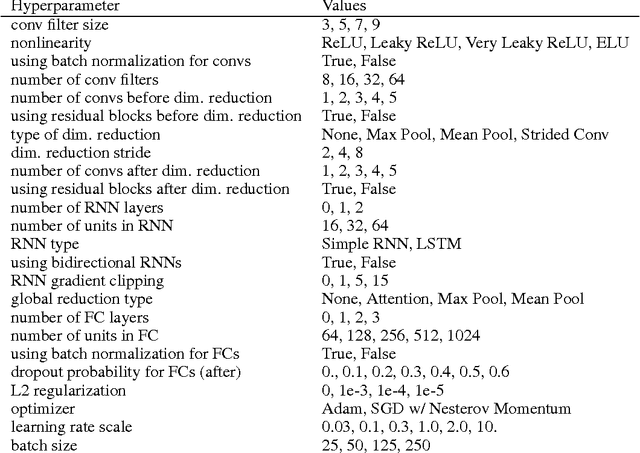Sasha Targ
Genetic Architect: Discovering Genomic Structure with Learned Neural Architectures
May 23, 2016



Abstract:Each human genome is a 3 billion base pair set of encoding instructions. Decoding the genome using deep learning fundamentally differs from most tasks, as we do not know the full structure of the data and therefore cannot design architectures to suit it. As such, architectures that fit the structure of genomics should be learned not prescribed. Here, we develop a novel search algorithm, applicable across domains, that discovers an optimal architecture which simultaneously learns general genomic patterns and identifies the most important sequence motifs in predicting functional genomic outcomes. The architectures we find using this algorithm succeed at using only RNA expression data to predict gene regulatory structure, learn human-interpretable visualizations of key sequence motifs, and surpass state-of-the-art results on benchmark genomics challenges.
Resnet in Resnet: Generalizing Residual Architectures
Mar 25, 2016



Abstract:Residual networks (ResNets) have recently achieved state-of-the-art on challenging computer vision tasks. We introduce Resnet in Resnet (RiR): a deep dual-stream architecture that generalizes ResNets and standard CNNs and is easily implemented with no computational overhead. RiR consistently improves performance over ResNets, outperforms architectures with similar amounts of augmentation on CIFAR-10, and establishes a new state-of-the-art on CIFAR-100.
 Add to Chrome
Add to Chrome Add to Firefox
Add to Firefox Add to Edge
Add to Edge